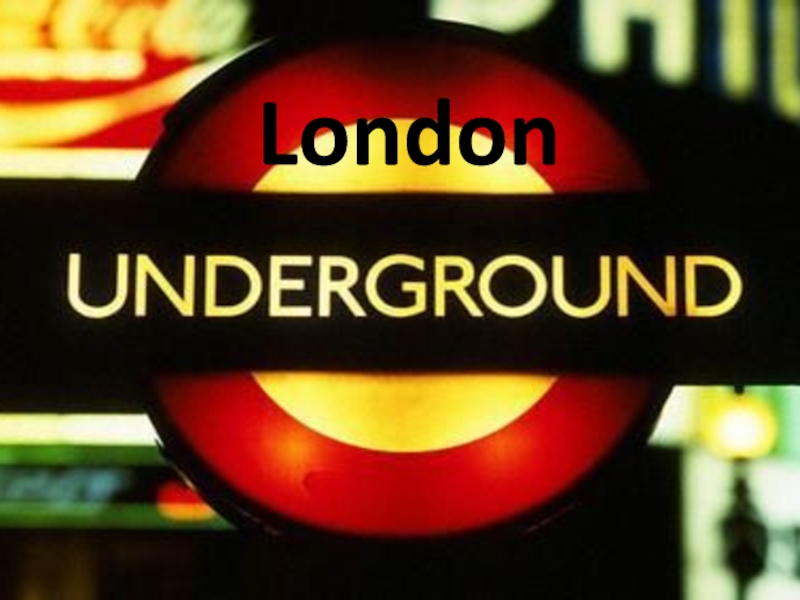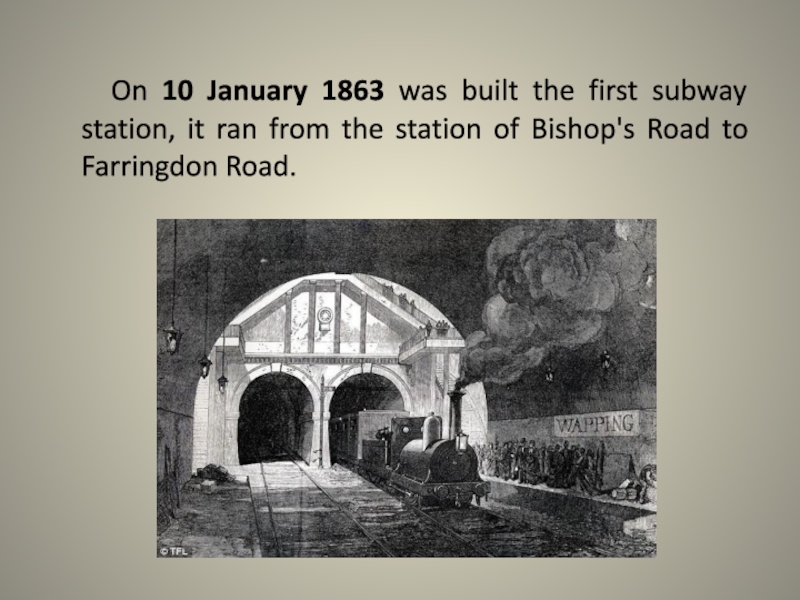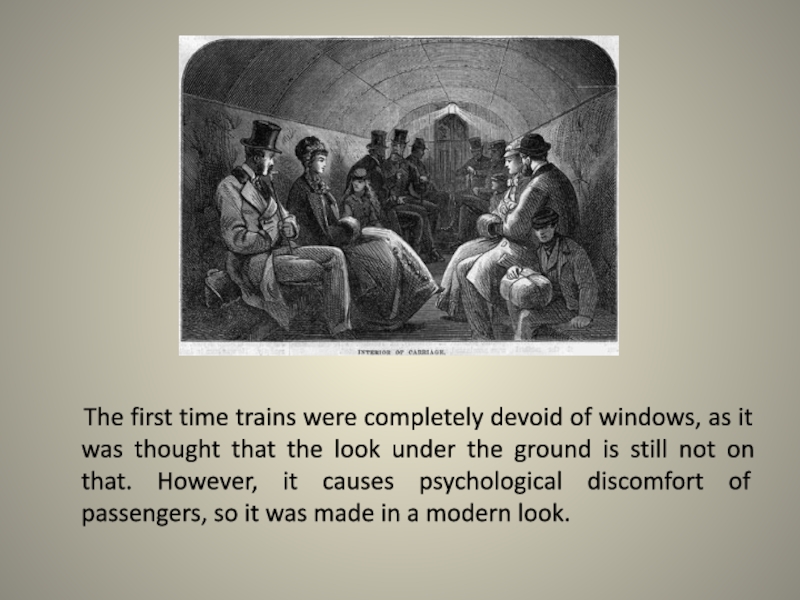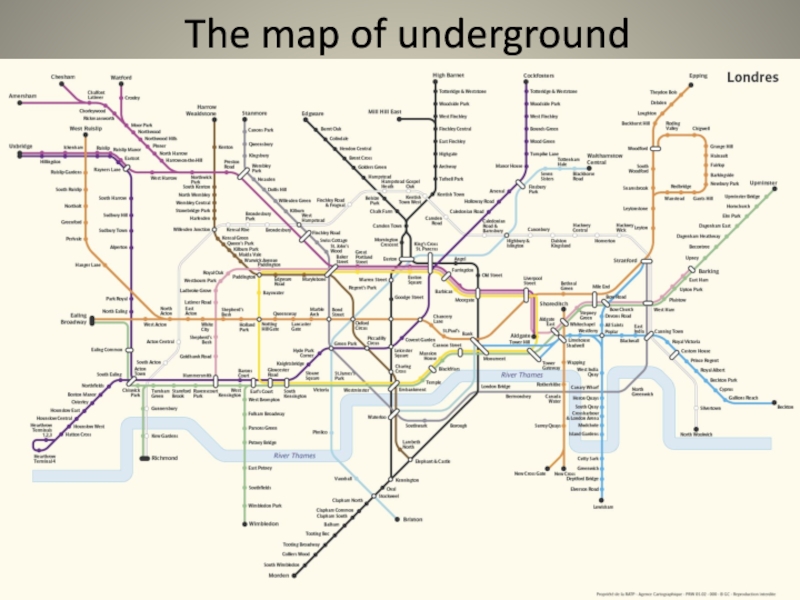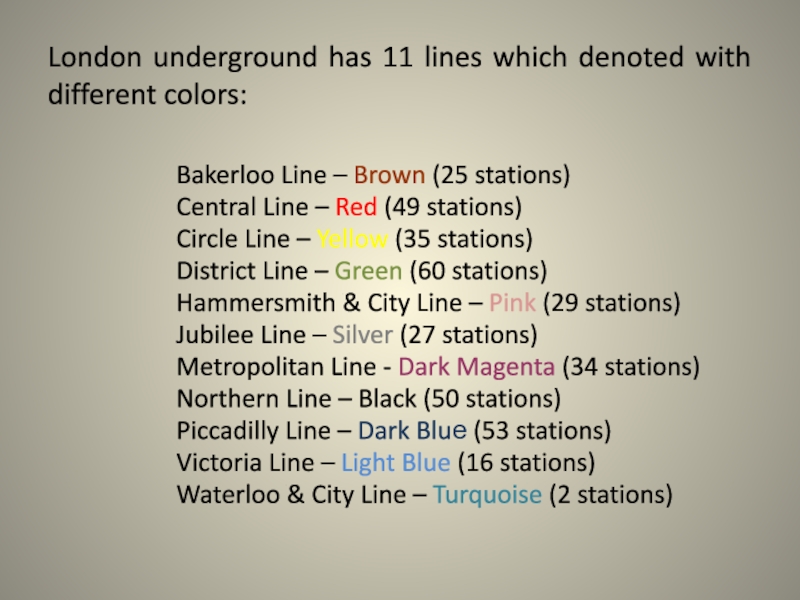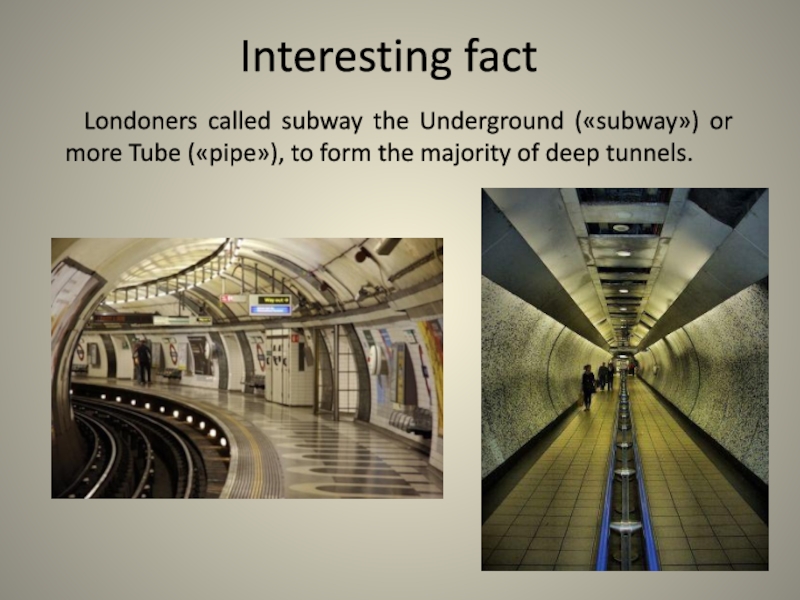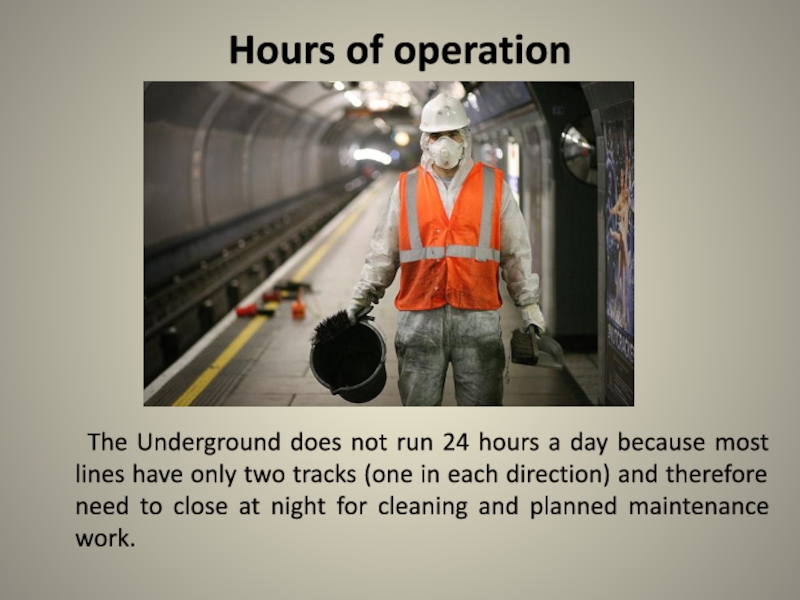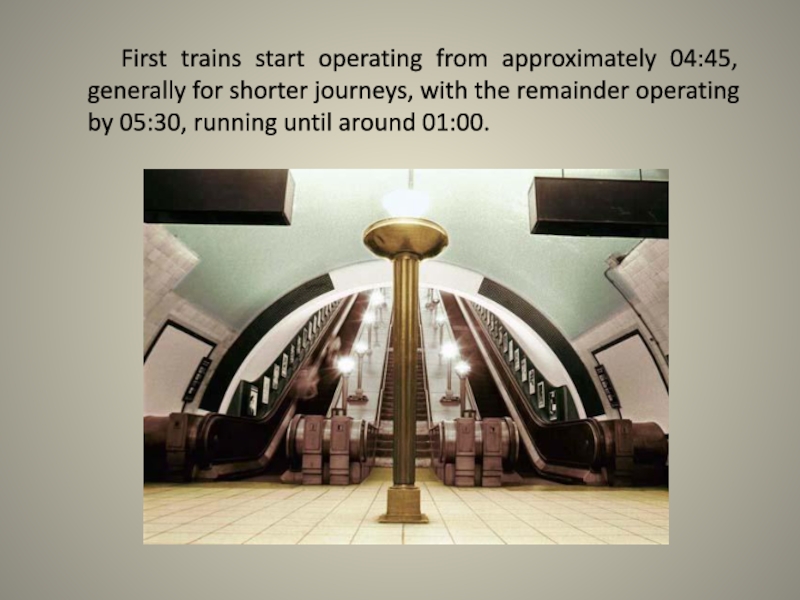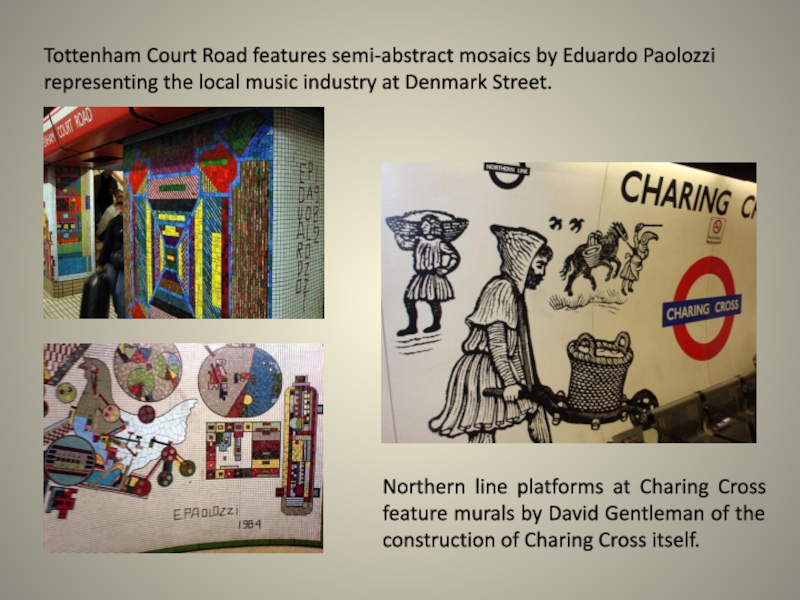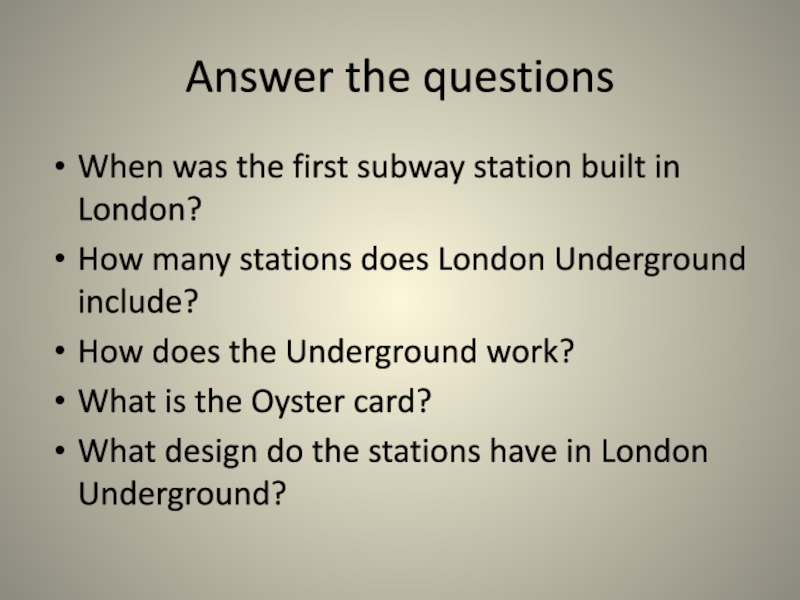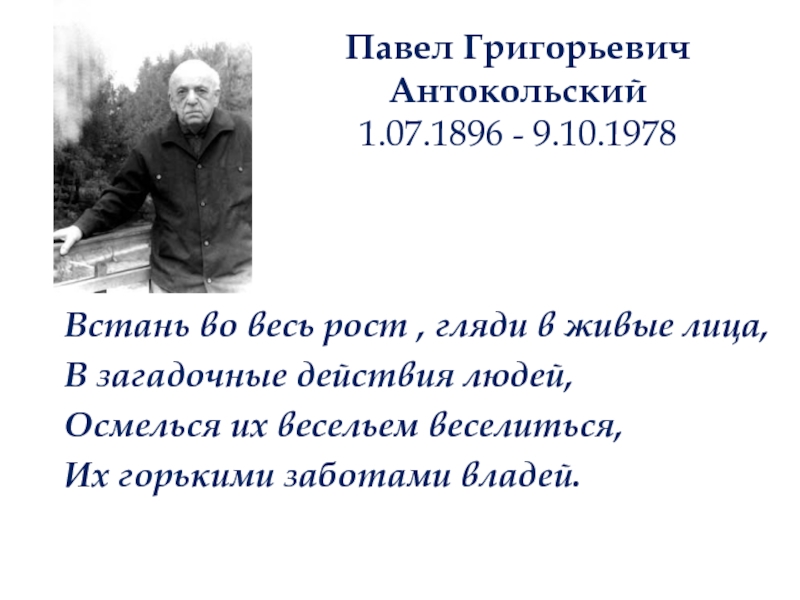Разделы презентаций
- Разное
- Английский язык
- Астрономия
- Алгебра
- Биология
- География
- Геометрия
- Детские презентации
- Информатика
- История
- Литература
- Математика
- Медицина
- Менеджмент
- Музыка
- МХК
- Немецкий язык
- ОБЖ
- Обществознание
- Окружающий мир
- Педагогика
- Русский язык
- Технология
- Физика
- Философия
- Химия
- Шаблоны, картинки для презентаций
- Экология
- Экономика
- Юриспруденция
London
Содержание
- 1. London
- 2. History London Underground was the first subway in the world.
- 3. On 10 January 1863 was
- 4. The first time trains
- 5. During the war, the metro was used as a bomb shelter.
- 6. Nowadays As of the 2010
- 7. The map of underground
- 8. London underground has 11 lines which denoted
- 9. Interesting fact Londoners called subway
- 10. Hours of operation The
- 11. First trains start operating
- 12. Ticketing In 2003, TfL introduced
- 13. Poster and billboard space is given over
- 14. Its artistic legacy includes
- 15. Many stations also feature
- 16. Tottenham Court Road features
- 17. Answer the questionsWhen was the first subway
- 18. Скачать презентанцию
History London Underground was the first subway in the world.
Слайды и текст этой презентации
Слайд 3 On 10 January 1863 was built the first
subway station, it ran from the station of Bishop's Road
to Farringdon Road.Слайд 4 The first time trains were completely devoid
of windows, as it was thought that the look under
the ground is still not on that. However, it causes psychological discomfort of passengers, so it was made in a modern look.Слайд 6Nowadays
As of the 2010 London Underground includes
270 stations
The length of track - more
than 253 miles (408 kilometers). London Underground passenger traffic in 2008 totaled 1.09 billion, or about 3 million people a day.
Слайд 8London underground has 11 lines which denoted with different colors:
Bakerloo
Line – Brown (25 stations)
Central Line – Red (49 stations)
Circle
Line – Yellow (35 stations)District Line – Green (60 stations)
Hammersmith & City Line – Pink (29 stations)
Jubilee Line – Silver (27 stations)
Metropolitan Line - Dark Magenta (34 stations)
Northern Line – Black (50 stations)
Piccadilly Line – Dark Bluе (53 stations)
Victoria Line – Light Blue (16 stations)
Waterloo & City Line – Turquoise (2 stations)
Слайд 9Interesting fact
Londoners called subway the Underground («subway»)
or more Tube («pipe»), to form the majority of deep
tunnels.Слайд 10Hours of operation
The Underground does not run
24 hours a day because most lines have only two
tracks (one in each direction) and therefore need to close at night for cleaning and planned maintenance work.Слайд 11 First trains start operating from approximately 04:45,
generally for shorter journeys, with the remainder operating by 05:30,
running until around 01:00.Слайд 12Ticketing
In 2003, TfL introduced the Oyster card, that
travelers can obtain, charge with credit and use to pay
for travel. The Oyster card is cheaper to operate than cash ticketing or the older-style magnetic-strip-based Travelcards.Слайд 13Poster and billboard space is given over to artwork and
poetry to "create an environment for positive impact and to
enhance and enrich the journeys of ... passengers".Arts in the underground
Слайд 14 Its artistic legacy includes the employment, since
the 1920s, of many well-known graphic designers, illustrators and artists
for its own publicity posters.Слайд 15 Many stations also feature unique interior designs
to help passenger identification. Often, these have themes of local
significance. In the walls at Baker Street station represent silhouette of Sherlock Holmes.Слайд 16 Tottenham Court Road features semi-abstract mosaics by
Eduardo Paolozzi representing the local music industry at Denmark Street.
Northern line platforms at Charing Cross feature murals by David Gentleman of the construction of Charing Cross itself.
Слайд 17Answer the questions
When was the first subway station built in
London?
How many stations does London Underground include?
How does the Underground
work?What is the Oyster card?
What design do the stations have in London Underground?
